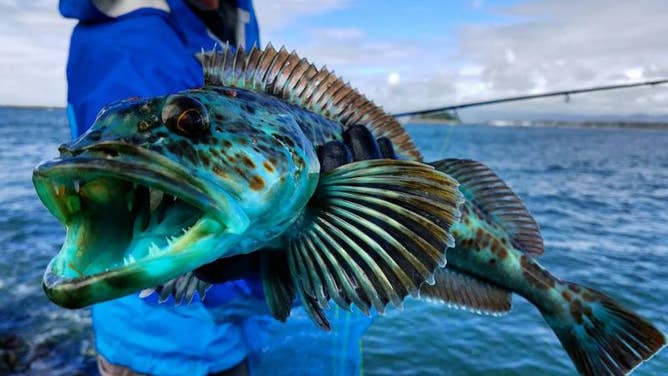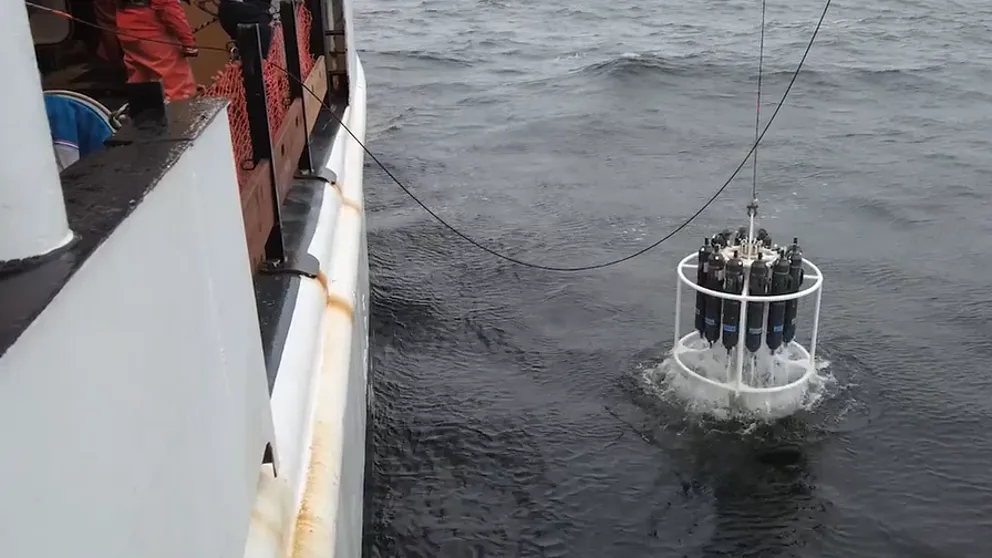Here's why scientists are worried about newly discovered underwater heat waves
Called bottom marine heat waves, these temperature anomalies are linked to declining fish populations, the spread of invasive species and millions of tourism dollars lost.
NOAA scientists are studying Alaska's marine ecosystems
The EcoFOCI program helps determine impacts on Alaska's ecosystems from a changing climate. (NOAA)
In a recent study, researchers discovered extreme warming along the seafloor of the North American continental shelves.
Continental shelves form the edge of the continent. They extend up to 300 miles out to sea and, compared to the majority of the ocean floor, have shallow water. Their shallow depths and relative proximity to land allow continental shelf waters to be productive.
For example, the bottom of continental shelves serves as critical habitats for commercial species such as lobsters, scallops, crabs, flounder, cod and other groundfish, according to the National Oceanic and Atmospheric Association (NOAA).

Ling cod, like this one caught off of Humboldt Bay Jetty in California, are a member of Pacific groundfish communities vulnerable to impacts from bottom marine heat waves.
(Nicholas Easterbrook / NOAA Fisheries / FOX Weather)
CRABBING INDUSTRY LOSES FIGHT TO PREVENT FISHING IN CRITICAL ALASKAN ECOSYSTEM
These habitats, however, can become compromised when waters close to the seafloor experience heat waves, according to a paper published by researchers from NOAA, the National Center for Atmospheric Research (NCAR) and the Cooperative Institute for Research in Environmental Sciences (CIRES).
Called bottom marine heat waves, these temperature anomalies can occur with little or no evidence of warming at the surface.
This can have important implications for commercial fisheries, which may not realize the occurrence of the heat wave until the impacts start to show, said lead author Dillon Amaya, a research scientist with NOAA’s Physical Science Laboratory.
One such impact was found in 2021 after a multi-year marine heat wave known as "The Blob" swept through the northern Pacific Ocean.
According to NOAA, the Blob included masses of water between 4 and 10 degrees Fahrenheit above average that disrupted West Coast marine ecosystems, depressed salmon returns, and caused millions of dollars in damages to commercial fisheries.
Bottom marine heat waves have also been linked to the expansion of invasive lionfish, a tropical fish species that prey on native species along the southeast U.S. coastlines.

A lionfish.
(NOAA / NOAA)
NOAA said other impacts caused by unusually warm bottom water temperatures include the disappearance of near-shore lobster populations in southern New England, coral bleaching and declines of reef fish and changes in survival rates of young Atlantic cod.
HOW GLOUCESTER HONORS A FISHING LEGACY SPANNING OVER 400 YEARS
Marine heat waves have become increasingly common. According to NOAA, they have become about 50% more frequent over the past ten years.







